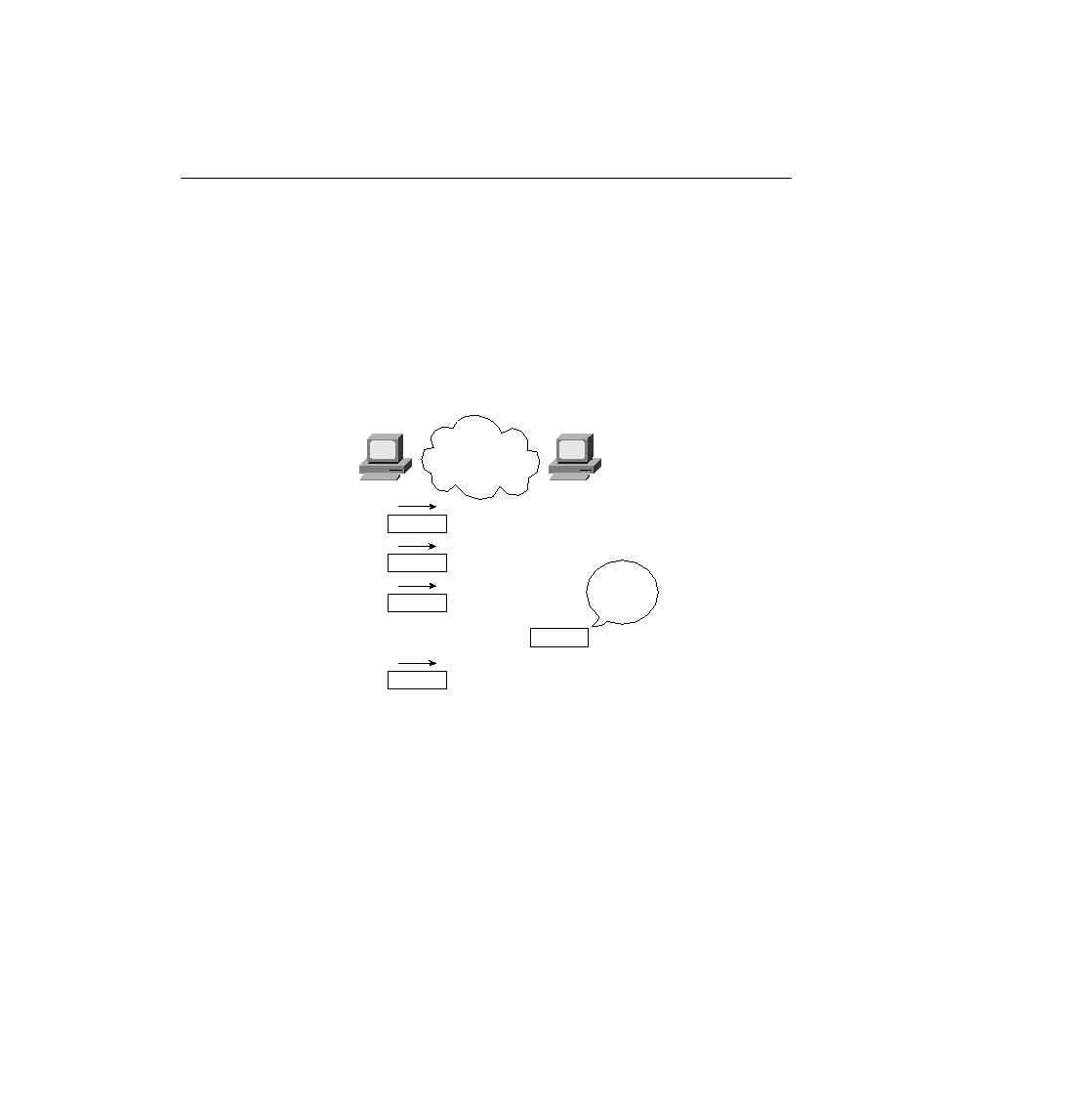
received, not the last one received. (In this case, 4 is next to be received.)
such as TCP, the number is stated during initialization by the sending machine. Also, some
protocols count the frame/packet/segment as 1; others count the number of bytes sent. In any
case, the basic idea is the same.
notice Barney's reply in Figure 3-8.
Fred could send numbers 2 and 3 again, or Fred could send number 2 and wait, hoping that
Barney's next acknowledgment will say 4, indicating that Barney just got number 2 and already
had number 3 from earlier.
and one to count data in the opposite direction. So, when Barney acknowledges packet number
2 with the number acknowledged field in the header, the header would also have a number sent
field that identifies the data in Barney's packet. For instance, assume in Figure 3-8 that the
previous packet Barney had sent was number 5. The packet shown in the figure would be
labeled 6.
error-recovery protocols.
#2 next.